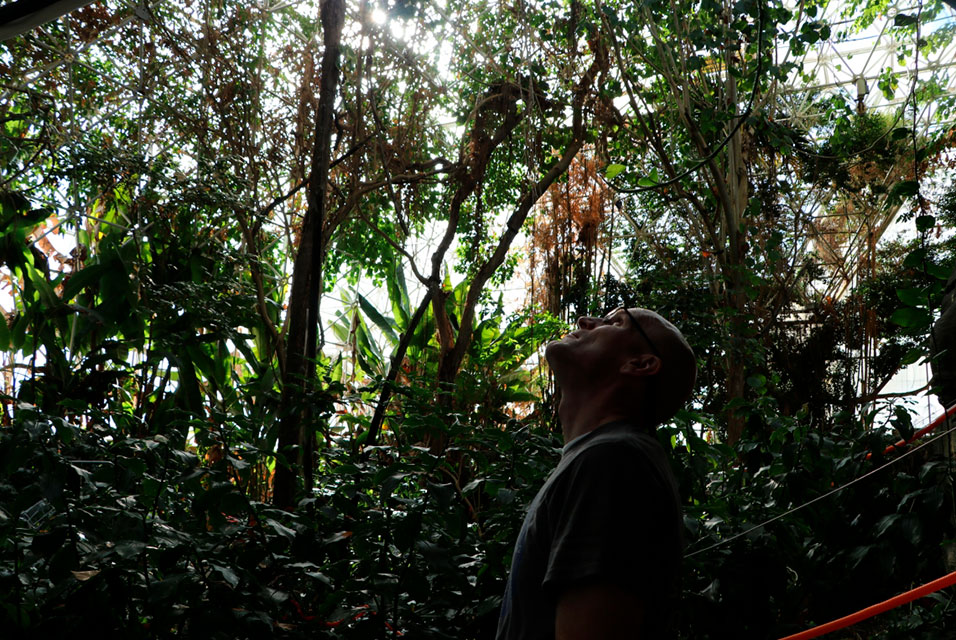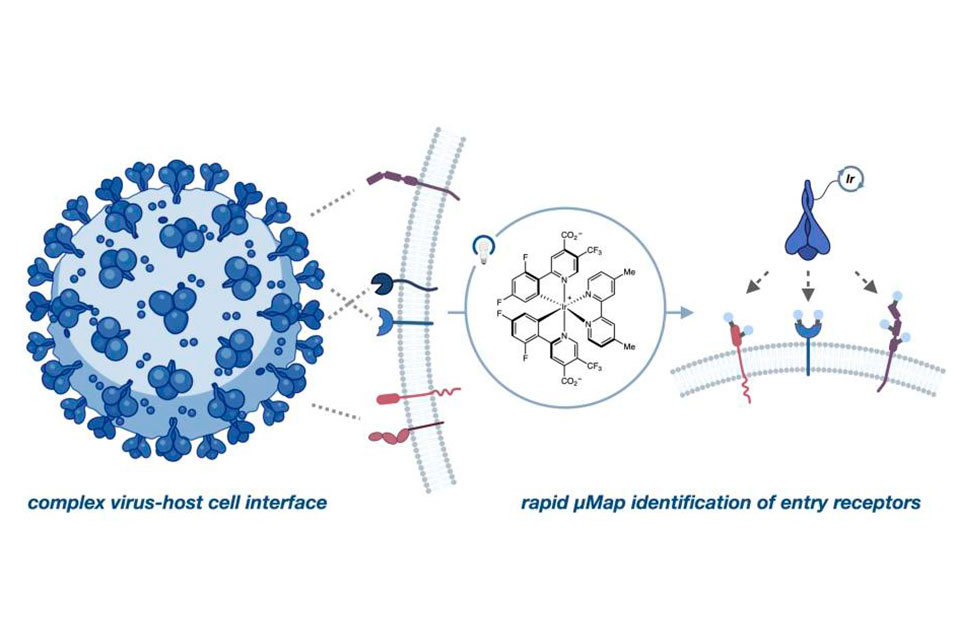TUCSON, AZ.- A new paper from researchers behind an unprecedented drought experiment at the
University of Arizona's Biosphere 2 underscores the importance of molecular compounds often associated with fragrance in identifying when an ecosystem is in distress.
Ever wonder what gives a forest its signature pine-fresh scent? The answer is the molecular compound pinene, a type of monoterpene naturally released by plants. Each year, plants pump roughly 100 million tons of monoterpenes into the atmosphere, where they play a significant role in the formation of clouds.
A study published in Nature this month explores how and under what conditions plants emit these volatile organic compounds, or VOCs, into the atmosphere. The results may help scientists sniff out when an ecosystem is in distress and better understand how Earth may try to adapt in the face of a hotter, drier future.
Forcing an artificial rainforest through drought
Co-authored by University of Arizona researchers Laura Meredith and Joost van Haren, the study is one of many to come from a controlled drought experiment conducted at the university's Biosphere 2, which was originally built to create self-sustaining ecosystems.
"There's no other place in the world where you can encapsulate a rainforest, subject it to a drought and then bring it out of that drought on a schedule that you dictate," said Biosphere 2 Deputy Director and Chief of Operations John Adams at the project's start. "This gives scientists a really unique opportunity to have everything well-poised so they can monitor and collect data that oftentimes is very difficult or impossible to get in the field."
For three months, the research team put the 30-acre "rainforest under glass" through moderate and then severe drought stress. The experiment, called Water, Atmosphere and Life Dynamics – or WALD, which is German for "forest" – set out to capture every bit of data possible throughout the drought and rewet process.
With more than 2 miles of Teflon tubing, 133 sensors and 423 data collection points throughout the forest, the team gathered measurements on everything from microbiome and deep-water soil processes to carbon pooling and VOC emissions.
Get a whiff of those VOCs
Many volatile organic compounds have a unique scent, explained Meredith, who helped lead the B2 WALD project for UArizona and is a co-author on the most recent study. For instance, forests smell of pinene and isoprene, while the chemical compound geosmin gives soil its earthy undertone and contributes to the distinct smell of rain in the air.
"There are many different types of volatile organic compounds that plants release into the atmosphere," said Meredith, an assistant professor in the School of Natural Resources and the Environment in the UArizona College of Agriculture and Life Sciences and a member of the BIO5 Institute. "If we can pinpoint their unique signatures and the biological processes behind them, we could fly an aircraft over the Amazon rainforest, for instance, and essentially measure and sniff out what's happening on the ground."
Meredith has made a career out of studying the potential of VOCs and was recently recognized by the American Geophysical Union with the Thomas Hilker Award, given annually to an early career scientist driving unusually creative work in the field of biogeosciences.
"My background is in atmospheric chemistry and I got really interested in how soil microbes influence the atmosphere," Meredith said. "So, I bridged that into microbiology, ecology, microbial and soil science to study ecosystems and global change on a large scale."
During the B2 WALD project, Meredith served as director of the rainforest at Biosphere 2 and brought together 90 scientists from five different countries to monitor the resiliency and vulnerability of plants and microbes. The scientific expertise of the project spanned all aspects of environmental stress, including hydrology, vegetation, soil and atmospheric science.
In conversation with clouds
Throughout the controlled drought experiment, researchers measured hourly emissions of several monoterpenes, including pinene, camphene, limonene, terpinene and isoprene to better understand how and when plants release VOCs.
Researchers found plants not only released more of these volatile organic compounds under stress but also shifted their emissions to later in the day. And there may be a good reason for that, according to atmospheric scientist and study co-author Jonathan Williams.
"We suspect that the later release of monoterpenes increases the likelihood that clouds will form over the forest," said Williams, project lead for the Max Planck Institute for Chemistry in Mainz, Germany.
"The warmer it gets during the day, the more the vertical mixing of the air increases, allowing the reactive volatiles to reach higher layers of air where they have a greater chance to become aerosol particles and eventually cloud condensation nuclei," Williams explained.
In other words, when an ecosystem is in drought, plants may use volatile organic compounds to drive the formation of clouds and bring much-needed rain.
The study underscores just how involved volatile organic compounds are in communication, defense and signaling between soil microbes, plants and the atmosphere, Meredith said.
Tapping the potential of VOCs
Meredith will continue her exploration of VOCs with a recent grant from the Department of Energy. Along with ecosystem genomics expert Malak Tfaily, an associate professor and environmental scientist in the College of Agriculture and Life Sciences, Meredith will explore carbon sequestration through soil, microbe and plant interactions.
"After exploring the impact of VOCs on the atmosphere, we will now turn our attention to how these carbon-carrying molecules influence soil and its capacity to sequester and store carbon," Meredith said. "Do plants and microbes pump VOCs into the ground, like they do in the atmosphere, and what processes help ensure the carbon stays below ground?"










